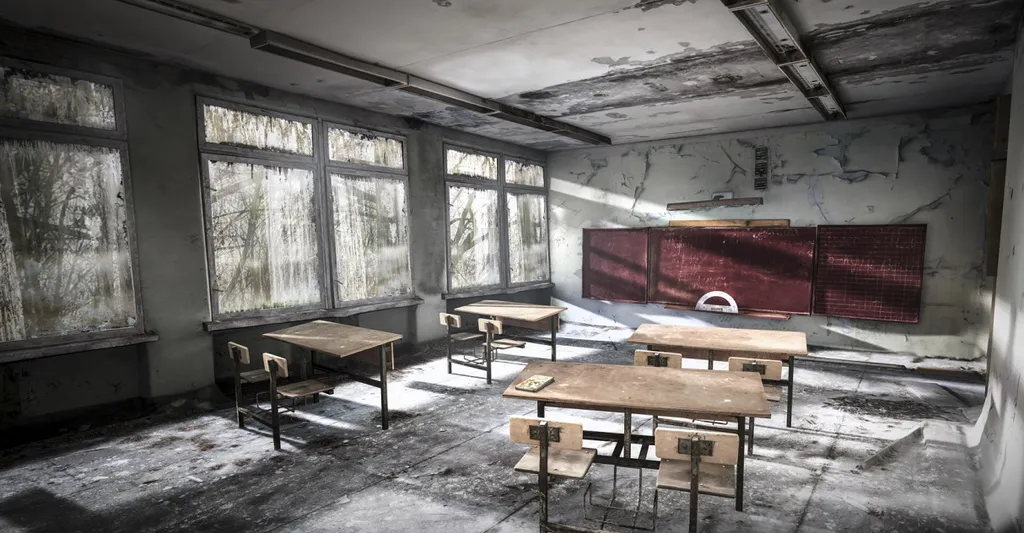In 1986, one of the worst nuclear power plant accidents in history hit the city of Pripyat, Ukraine. An explosion at the Chernobyl factory released large quantities of radioactive particles into the air, killing 31 people and causing long-term effects, like cancer, for countless others. It cost over 18 million rubles and 500,000 workers to control the contamination and avoid a much bigger catastrophe. Shortly thereafter, Pripyat became a ghost town.
You can actually go visit the city in real life, or whatever remains of it, as the radiation levels have dropped considerably. But the trip can still be dangerous and expensive for most, and that’s a shame. The Chernobyl disaster is a perfect and depressing showcase of what can happen if humans mismanage nuclear firepower and factories. It’s an important part of history, and now, with the help of virtual reality, Chernobyl VR will let anyone with a headset explore and study Pripyat.
Shedding Light on the Chernobyl Catastrophe
“The catastrophe in Ukraine and neighboring Poland left a permanent impression on Polish history, including our own childhood in the 1980s,” said Wojciech Pazdur, Creative Director on Chernobyl VR.
He and the rest of the team at The Farm 51 wanted to create a VR experience that could easily let people learn about a tragic event that impacted thousands of innocent people. Chernobyl VR combines traditional video game mechanics with movie narration, creating a virtual tour of most areas in Pripyat, and the Chernobyl factory itself.
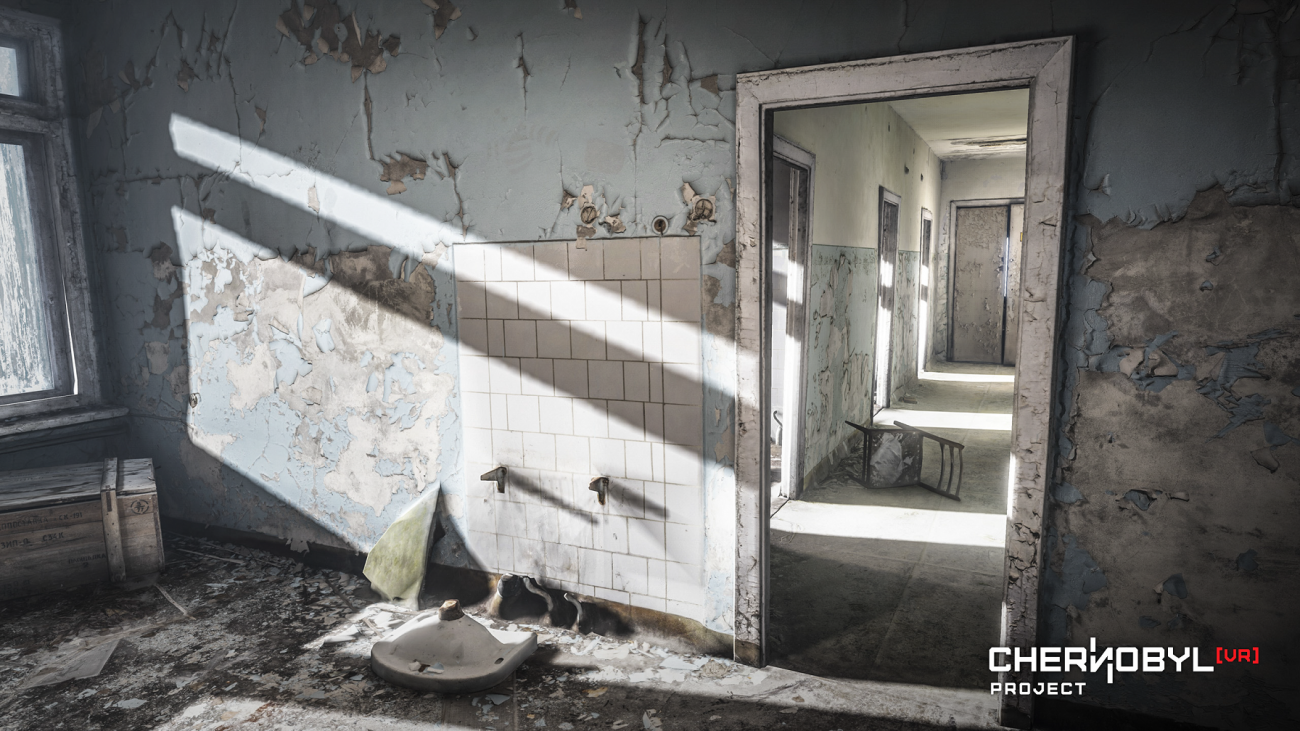
The idea behind creating this VR tour came when The Farm 51 started working on its upcoming first-person shooter Endgame, which forced the studio to study and invest in high-tech laboratories for scanning people and objects. Once the developer started to play around with ultra-realistic 3D scans, it realized it might be able to pull off a VR project that can educate people on a tragic event. But to successfully pull off Chernobyl VR, several team members had to take a trip to Pripyat.
“Our team visited the contaminated zone a few times, and we even obtained a special pass for scientists, enabling us to visit places not accessible for ordinary tourists,” said Pazdur. “Interestingly, before the first trip some of our team members were really afraid of going there, but the specific charm of that abandoned place made everybody in our company who didn’t get to go want to become a member of the visiting team.”
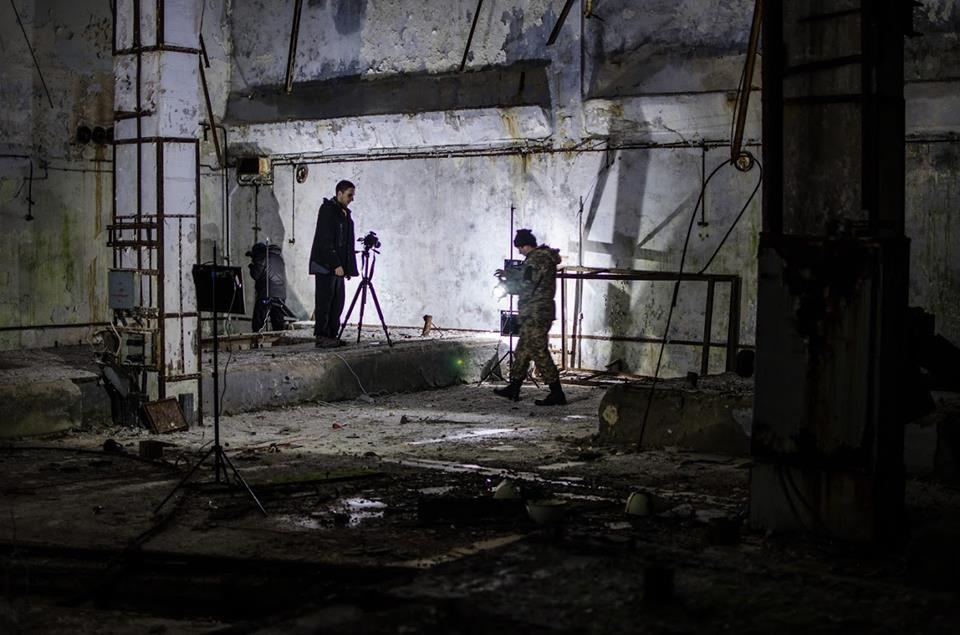
Not only did the studio visit Pripyat, it also interviewed people directly affected by, and involved with the disaster, from first responders, to those whose families suffered emotionally and physically.
“As far as research is concerned, we took thousands of photos that served as a base for reconstructing specific places,” said Pazdur. “We recorded 360-degree movies constituting an integral part of our application. We talked to many people who used to work, or still work and live there. Some of them can be seen and heard while playing the game. We talked with the famous ‘liquidators’, who are people that were dispatched immediately after the explosion to perform repair and cleaning works. Many of them were exposed to huge irradiation and died several years later from various diseases.
“We approached a number of famous people emotionally linked to the catastrophe as well. Those include Vitali Klitschko mentioned before, whose family members suffered from radiation sickness, and Svetlana Alexievich, a Nobel prize-winning author of many books about Chernobyl.”
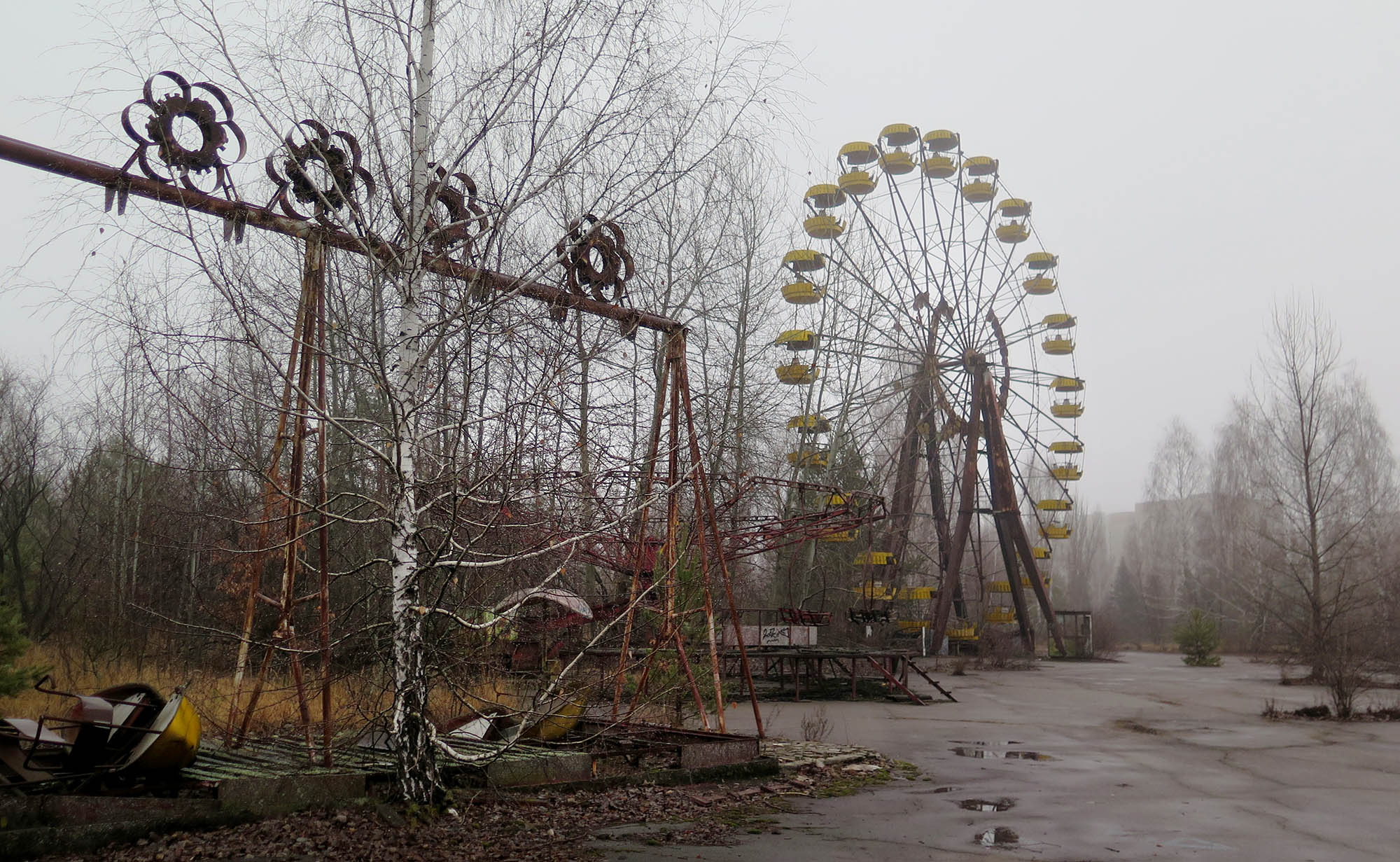
The Aftermath of a Nuclear Disaster
The most important aspect that The Farm 51 needed to get right with Chernobyl VR is its photorealistic visuals. The studio wants players to feel like they’re experiencing an interactive documentary movie. Every location, person, and object in the project, from the abandoned ferris wheel (actual real-life image shown above,) to ravaged buildings and trees, all look real and authentic, immersing you in a tour of an eerie ghost town. The studio’s 3D scanning and proprietary technology — called Reality 51 — made these photorealistic visuals possible to pull off.
Of course, The Farm 51 ran into a slew of problems during development. Compressing and optimizing large amounts of data without exacerbating VR hardware, like the Oculus Rift, was a herculean task that the studio managed to overcome. Other issues, mostly bureaucratic, were a little bit trickier to maneuver around.
“I mentioned problems with compression and optimization, but we had equally important challenges related to the specific conditions in Ukraine,” said Pazdur. “We had difficulties with obtaining permits for entry into the zone. Also, communication in English was a barrier. There were additional problems with transportation, resulting from the fact that Ukraine remains in conflict with Russia, which severely affects the country’s infrastructure.
“Another category of problems resulted from inadequate hardware capabilities from the older VR headset iterations. We had to wait long time until we received a versions of these headsets that fulfilled our hefty technological requirements. In fact, we are still waiting for hardware capable of supporting higher resolutions of video and graphics.”
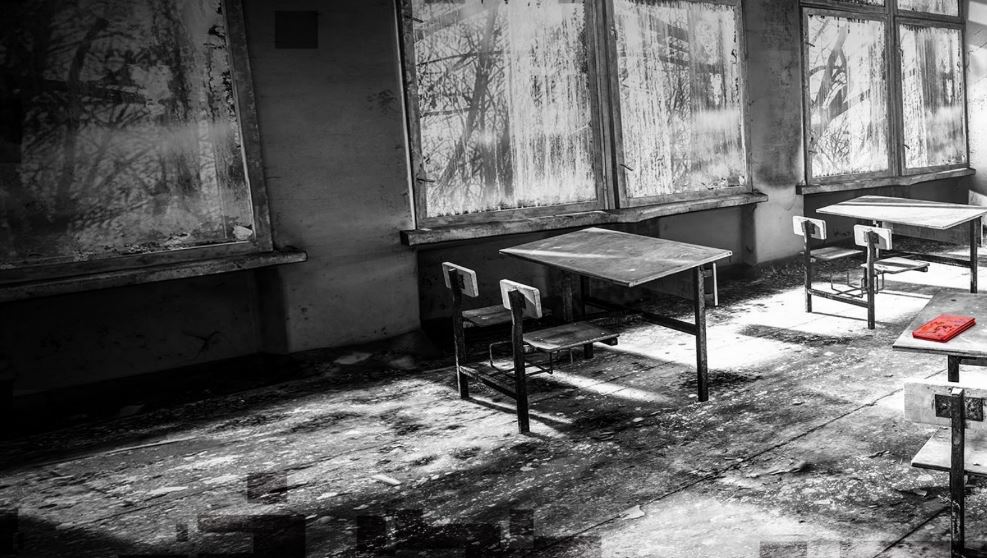
VR Can Be Used for More Than Just Games
The Farm 51 didn’t make Chernobyl VR just to test out some intriguing new technology. It wants to inform players about such catastrophes, as there are still plenty of nuclear power plants in operation around the world, and even just one mistake can ruin thousands of innocent lives. The studio worked with an environmental organization — Greenpeace — to help raise awareness.
“Greenpeace approached us, asking to help shine light on operated nuclear reactors that are largely being ignored, “ said Pazdur. “Greenpeace used Chernobyl VR in street campaigns to tell people about those still existing threats. So Chernobyl VR is decidedly an educational application designed to leave a permanent trace in our memory about the contaminated Chernobyl zone. We want people to also know and remember the disaster, especially considering the possibility of Pripyat and the Chernobyl factory ceasing to exist in the near future.
“We also donated a certain portion of revenues from Chernobyl VR’s sales to aid the victims of the catastrophe and their families. We are working with the Polish-Ukrainian foundation, Open Dialog, to select the people and organizations that most deserve the help.”
VR allows for more immersive and intriguing new gameplay experiences, there’s no denying that. Being transported in fantastical worlds where you feel like a constant participant is profound. But VR isn’t just for video games, as this tech can be used in several ways for different purpose; whether it’s documentary films, virtual vacations to exotic locations you might otherwise never visit, or interactive tours of important historical sites,
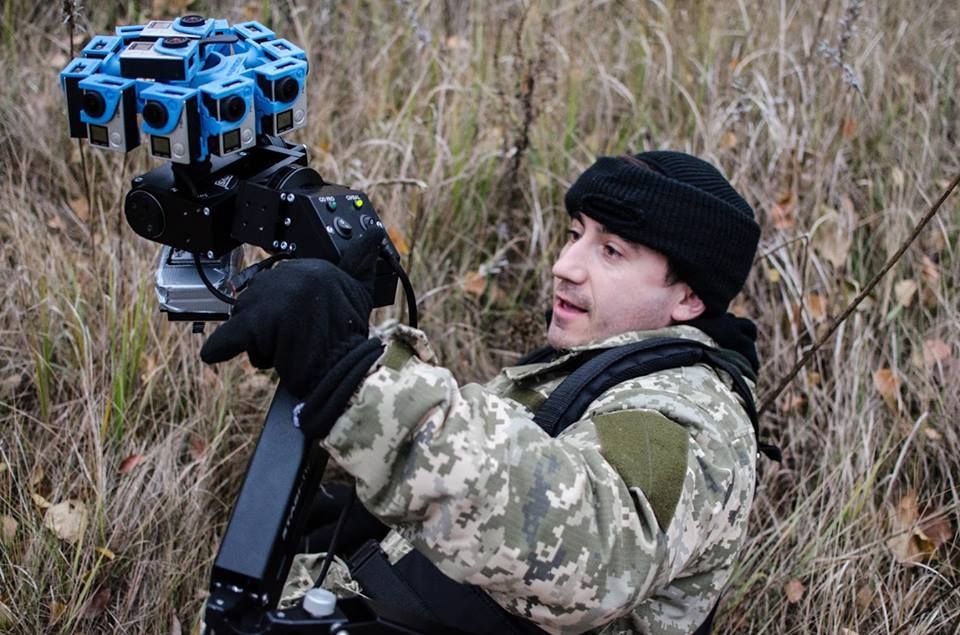
“I hope there will be more and more VR applications that carry social and political messages,” said Pazdur. “In my opinion, the potential of VR for telling serious stories is inexhaustible. As an industry we can demonstrate that, besides games and addictive porn applications, (which will also certainly appear in great numbers), there is room for other messages and other stories, can be beneficial for people in numerous ways.
“As creators, we can enable them to see things or places they would never be able to visit or experience without VR, and Chernobyl is one such place.”
—
The Chernobyl VR Project is now available for download on the Oculus Store and Steam for $14.99. You can visit the official website for more information.
Alex Gilyadov is a freelance writer with work appearing in multiple publications, such as GameSpot, VICE, Playboy, Polygon, and more. You can follow him on Twitter: @rparampampam.

